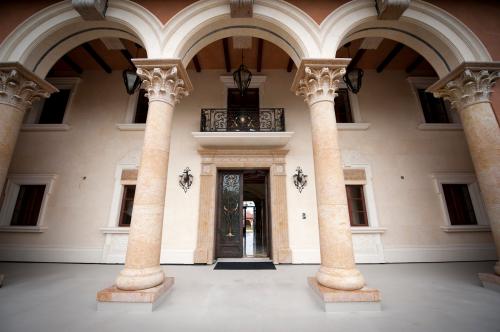This blog post summarizes the findings of the paper, “Progressive wealth taxation,” written by Emmanuel Saez and Gabriel Zucman, and part of the Fall 2019 edition of the Brookings Papers on Economic Activity. Read summaries of all six papers from the journal here.
Emmanuel Saez and Gabriel Zucman’s paper, “Progressive Wealth Taxation,” provides two important contributions to a policy question about which there continues to be disagreement. First, the paper adds to the body of research documenting the substantial increase in wealth inequality in the U.S. over the past 40 years. Second, the paper provides policymakers with detailed steps to successfully implement a progressive wealth tax.
A progressive wealth tax is an annual tax collected on net household wealth that applies higher rates as the amount of wealth increases. Saez and Zucman define net household wealth as the sum of all financial and non-financial assets minus debts. Financial assets include fixed-income claims—such as a checking account or a bond—corporate equity, and non-corporate equity. Non-financial assets are those with physical presence, such as real estate, vehicles, and artwork.
Saez and Zucman find that the U.S. wealth tax base is between 9 and 13 trillion dollars for a wealth tax applied to the 0.1 percent richest families, depending on the method used to measure wealth and assuming perfect enforcement. Relaxing the perfect enforcement assumption reduces this wealth tax base by 12.9 percent under a “strong enforcement” [1] scenario.
In addition, as shown in figure 5, Saez and Zucman find that the total share of wealth owned in 2018 by the 400 richest Americans (the Forbes 400) would be reduced from about 3.5 to about 2 percent had a “moderate” [2] wealth tax been in place since 1982; this share is reduced further to about 1 percent under a more “radical” [3] wealth tax in place since 1982. This 1 percent share is approximately equal to the share of wealth owned by this same group in 1982—a year when wealth inequality was close to its lowest point. According to the authors, those in the top .1 percent owned about 8 percent of total household wealth in the United States in 1982. In 2016, this share had increased to around 20 percent. Importantly, this 20 percent share is only somewhat less than the approximately 25 percent share owned by the entire bottom 90 percent in 2016.

Critics cite three reasons to oppose a wealth tax. The first reason is that wealth taxes have failed in Europe. Indeed, eight of the twelve European countries with a wealth tax in 1990 had abandoned them by 2019. Saez and Zucman argue that the wealth tax repeals in Europe were the result of poor policy choices. For example, European wealth taxes were levied on households with little cash but substantial illiquid wealth due to low exemption thresholds. To avoid this problem, Saez and Zucman advocate for a high exemption threshold. The authors note that the exemption threshold in Elizabeth Warren’s wealth tax proposal—which is set at $50 million—is 50 times higher than the typical European wealth tax.
The second potential problem with a wealth tax is tax evasion. Saez and Zucman note that although Europe did a poor job preventing offshore evasion, the passage of the Foreign Account Tax Compliance Act (FATCA) puts the U.S. in a better position to combat this problem. Saez and Zucman also recommend requiring third parties—like financial institutions—to report wealth balances to the IRS. This third-party requirement would reduce reliance on household self-reporting.
The final argument against a wealth tax are the potential negative economic impacts, such as a reduction in the capital stock or a decrease in innovation. Saez and Zucman show that a wealth tax with a $50 million threshold would apply to only about 10 percent of the total household wealth stock. They argue that increased savings from the rest of the population (as the result of decreased inequality) and the government could potentially offset any reduction in the capital stock. In terms of the effects on innovation, Saez and Zucman reason that most innovation is produced by young, not wealthy individuals (the wealthy tend to be much older than average), who would not be impacted by a high-exemption wealth tax. Moreover, Saez and Zucman argue that established businesses spend resources protecting their dominant market positions which reduces innovation. As a result, a wealth tax that only collects taxes from established business owners could increase competition and thus innovation.
[1] The authors define a strong enforcement scenario as a 15% evasion rate.
[2] The authors define a moderate wealth tax as a tax with a 2% marginal tax rate above $50 million and a 3% marginal tax rate above $1 billion.
[3] The authors define a radical wealth tax as a tax with a 2% marginal tax rate above $50 million and a 10% marginal tax rate above $1 billion.





Commentary
Estimating the economic impact of a wealth tax
September 5, 2019